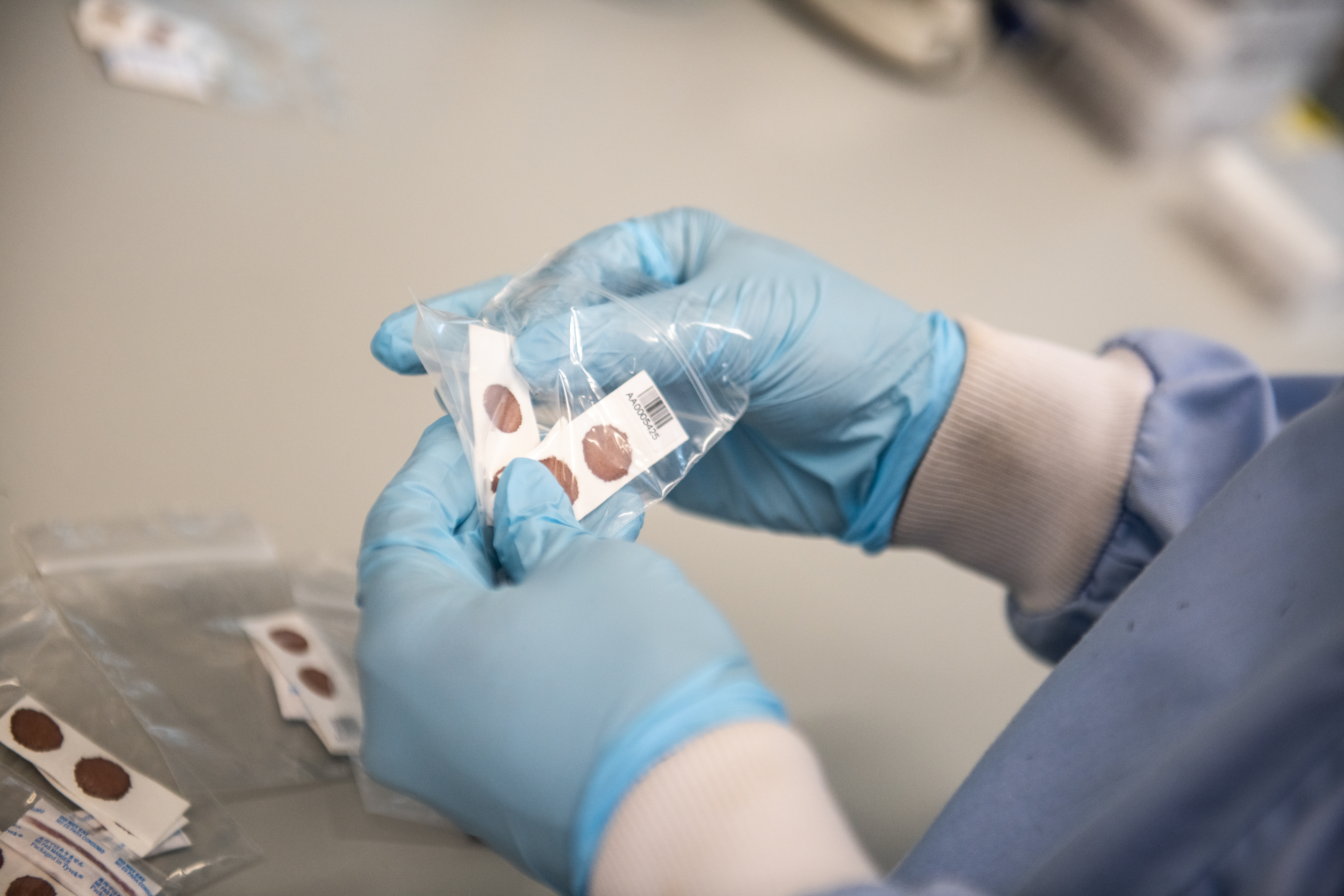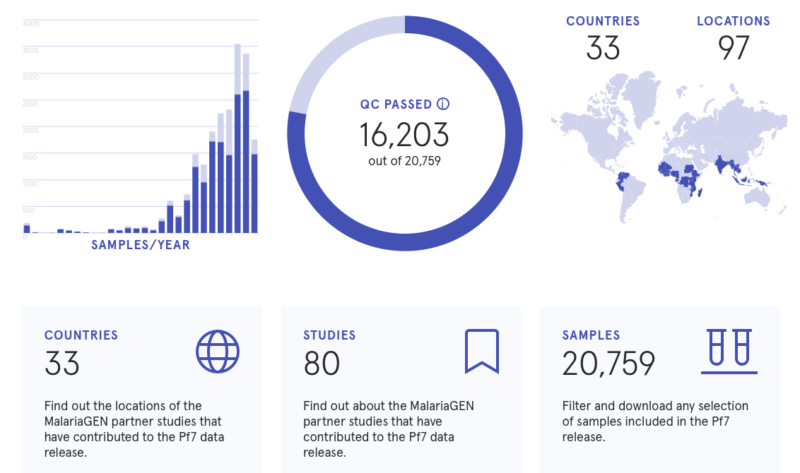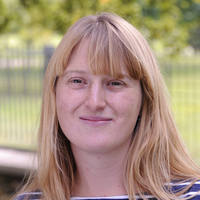Malaria Parasite Genomic Surveillance
Genomic Surveillance Unit
About us

We are biologists, bioinformaticians, technicians, and data scientists working at the intersection of computation, biology, lab methods, and public health. With a strong emphasis on creating useful data for our public health partners, we seek to understand the malaria parasite and its evolution. We work collaboratively with other teams in the Genomic Surveillance Unit and around the world to scale the extraction of useful, high-quality genomic data from malaria parasites.
Our work

Building on nearly twenty years of experience integrating with the MalariaGEN network, we create data resources that track genetic changes in Plasmodium parasites, mostly of the two species responsible for most malaria deaths: P. falciparum and P. vivax. The largest of these resources is Pf7, a dataset containing more than 20,000 whole genome sequences of P. falciparum parasites from 33 countries. The P. vivax version of that dataset, Pv4, contains nearly 2,000 whole genome sequences.
We help build up surveillance capacity in malaria-endemic areas through projects like the NIHR-funded Genomic Surveillance Hubs in West Africa Global Health Research Group and by supporting partners across the world in their genomic surveillance efforts.
Building on successes with amplicon sequencing for tracking antimalarial drug resistance, we are building an Amplicon Toolkit with other teams in the Genomic Surveillance Unit. This suite of tools and services will allow partners to implement amplicon sequencing for genomic surveillance of malaria parasites. It will be an end-to-end product that includes metadata curation, training, sequence upload, bioinformatic analysis, data return, and genetic report cards.
Our team’s lab experience helps create new ways to make sequencing the parasites easier. For example, we are looking at how to enhance Plasmodium vivax DNA within samples to be able to look at this parasite in more detail and how to extract DNA from malaria rapid diagnostic tests, essentially a waste product from malaria diagnosis. Ongoing research and development also includes how to access complex parts of the parasite genome using long read sequencing technologies.
Core team

Dr Jacob Almagro-Garcia
Translational Research Lead

Chiyun Lee
Senior Data Scientist

Dr Richard Pearson
Parasite Data Lead

Kate Rowlands
Team Coordinator

Dr Eyyub Unlu
Data Scientist

Dr Nina White
Senior Data Scientist
Previous core team members

Dr Kim Judge
Research Software Engineer

Georgia Elizabeth Whitton
Senior Data Scientist
